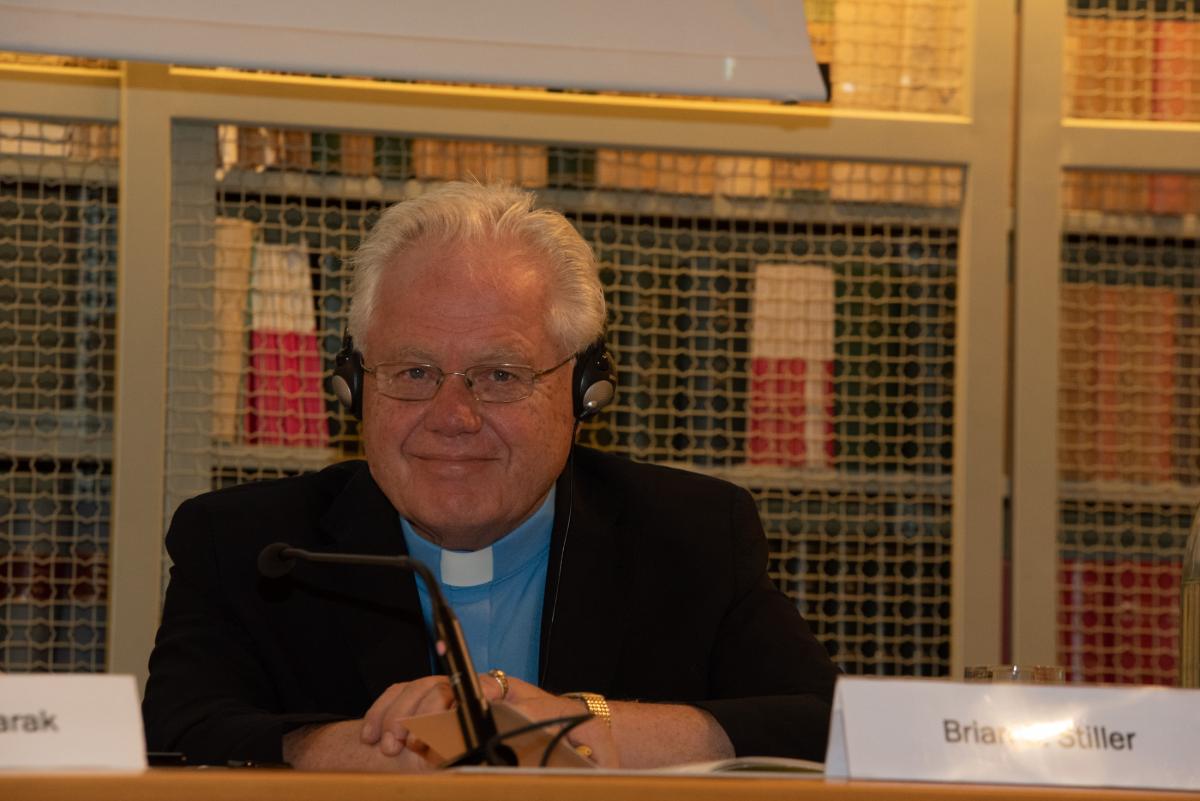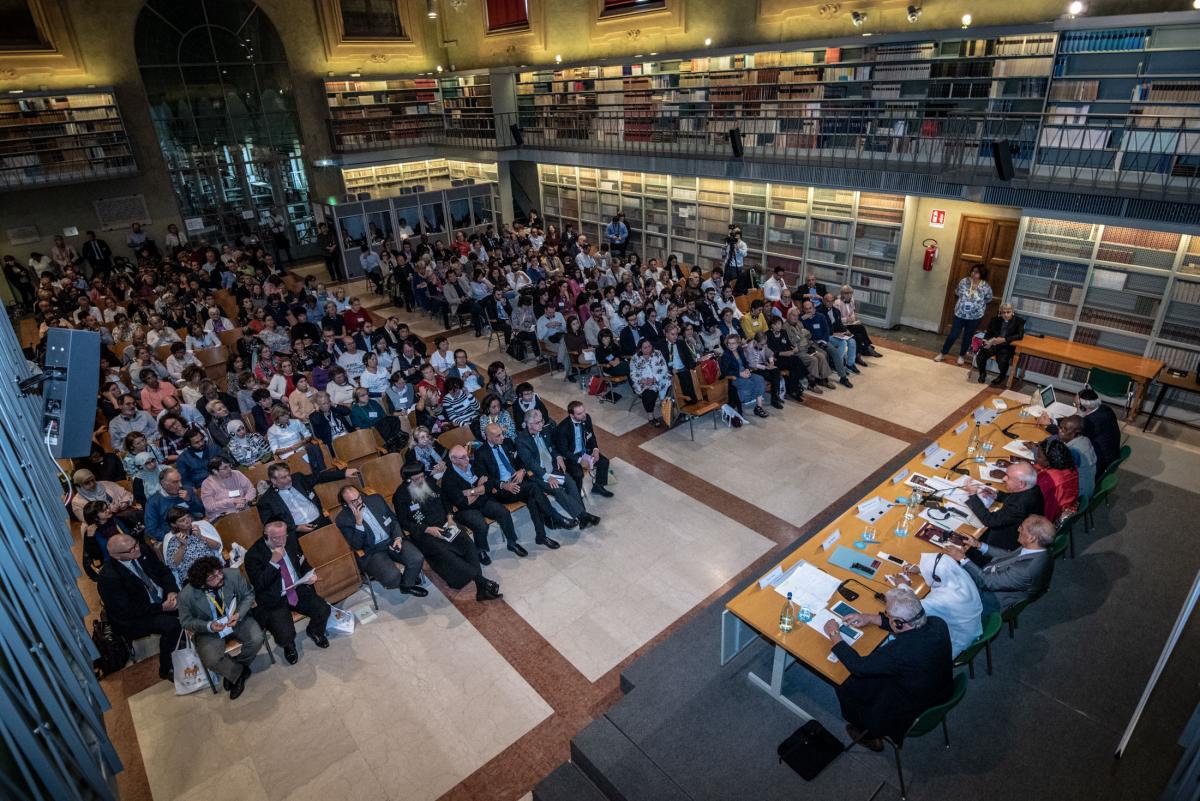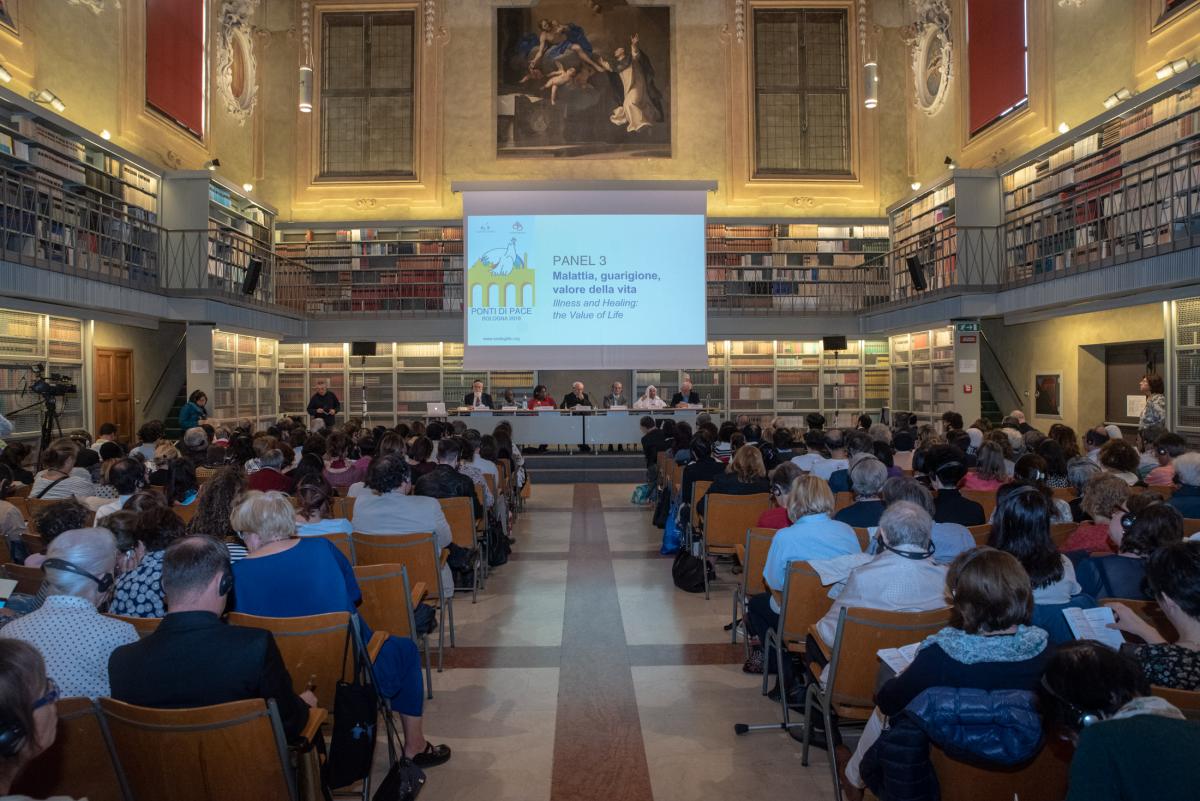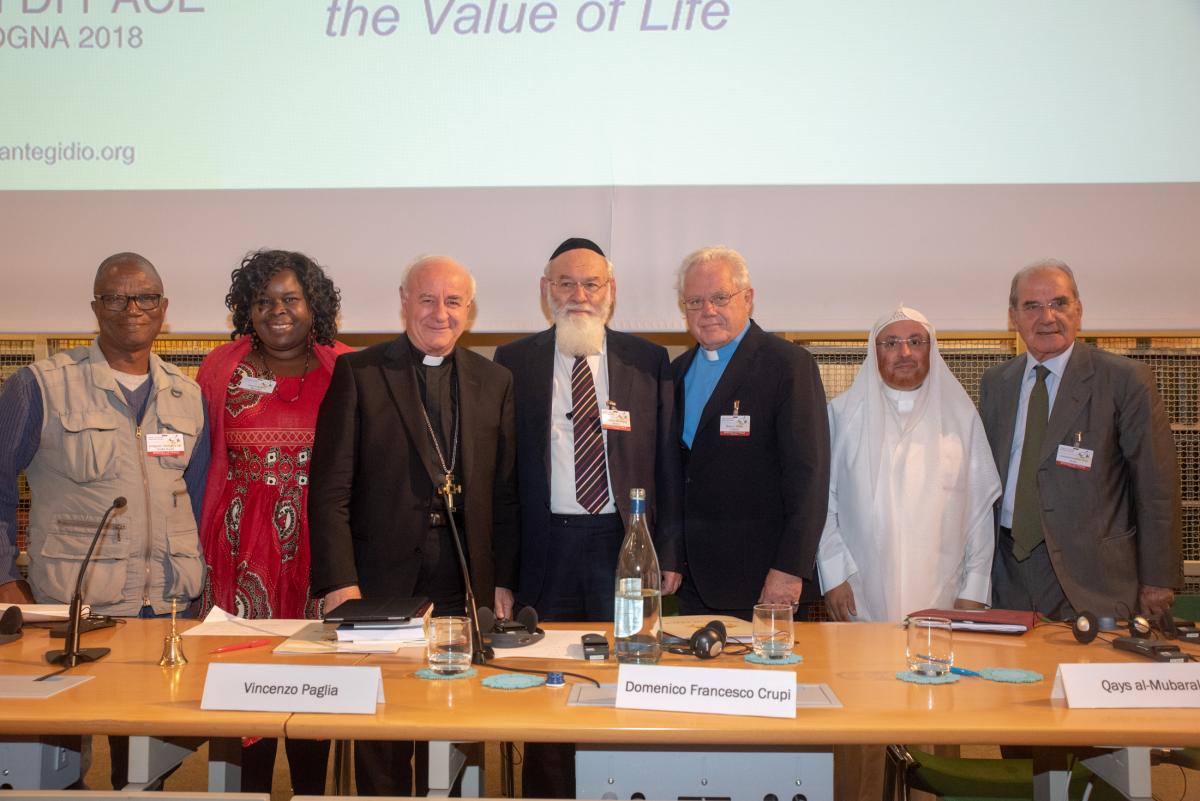
Brian C. Stiller
Wereldwijd ambassadeur van de World Evangelical Alliance, Verenigde Statenbiografie
Some men brought to him a paralyzed man, lying on a mat. When Jesus saw their faith, he said to the man, “Take heart, son; your sins are forgiven.” At this, some of the teachers of the law said to themselves, “This fellow is blaspheming!” Knowing their thoughts, Jesus said, “Why do you entertain evil thoughts in your hearts? 5 Which is easier: to say, ‘Your sins are forgiven,’ or to say, ‘Get up and walk’? 6 But I want you to know that the Son of Man has authority on earth to forgive sins.” So he said to the paralyzed man, “Get up, take your mat and go home.” Then the man got up and went home. When the crowd saw this, they were filled with awe; and they praised God, who had given such authority to man.
Matthew 9:2-8
Matthew 9:2-8
I begin with this story of Jesus as it goes to the heart of the matter of illness and healing.
In our scientific world of analyzing the human project, we naturally are inclined to divide up the human reality into that which we can see, what is tangible and that which is not. Healing is often seen as fixing the physical, doing a transplant, cutting out cancer cells or fixing a painful knee.
Increasingly we know that illness is more than what can be resolved by medicines and operations. Those who struggle to survive after trauma can tell us, only too well.
Here Jesus closes the gap between the person who had a physical disability – he was paralyzed and probably could not walk – and the other side to his illness, what those who watched missed altogether. It was his inner human reality of being spiritually disfigured.
I suggest that we may want to look at this dual reality of illness and healing through his eyes, and from this broaden our understanding of both what we need and what Jesus has willed to do about it.
First then, how did he understand the problem.
I think in two ways:
- He went to the core of the human dilemma. We look at what has been done: the body disfigurement, the disability, the smashed tissue. Or the broken spirit, the damaged emotions, the trauma of the heart. And so we should. Jesus was not oblivious to this man’s condition. But the Bible writer wants us to know that Jesus did the unexpected as he had an important lesson for us. So how did he understand the problem? There was more than met the eye. The man needed to be released from the burden and control of sin.
- Secondly his active forgiveness was more than a lesson about the human condition. He reached into the life of this one person and relieved him of what we all live with: a life broken in relationship to our Creator. And why was that? How does sin enter into the picture? The biblical story is that as humans, made in his image, bear the image of the eternal and Creator God. To say we are a chip off the old block is not an overstatement. We come out of his existential reality, bearing God’s likeness in ways that go beyond optimistic humanism. Indeed, it is a view of creation framed by not just the idea of God, but an imprint of the reality of God. The imago Dei is foundational to a Christian understanding of our own creation. However, the brokenness of fellowship with our Creator, as the Genesis account describes, was and is cataclysmic. It not only pushes us away from a relationship, it disfigures our soul and body, resulting in a subjugation to sorrow, illness and trauma. Sometimes that sinning is done against us and sometimes we do it ourselves. In either case, it ends up in human illness.
Second, how did he bring healing?
He began with the oft-ignored condition of human trauma which is an estrangement from the Creator and brokenness with others and importantly to note, ourselves.
When communion with God is broken, full communion with each other is impossible. They cannot give water, since the well at the source of their being is not flowing. They cannot give life, for something has died within them. Men will tend to dominate women and women to find compensation in the children. Their bodies may still function in a way that symbolizes wholeness. They can copulate and conceive the child, but the essence of wholeness and communion is lost. The harmony between their hearts, their heads and their sexuality is gone. The pain of this loss is so deeply buried; often it is not recognized.
The Broken Body by Jean Vanier.
What we do to others and ourselves is reconfigured by rewriting our story, making ourselves the one that others mistreat or ignore. Instead of asking, what is within our human condition that exacerbates illnesses created by both the sins of others and the sins of ourselves.
It is here I explain the means by which our sins are forgiven, and the illnesses of our lives faced. The burden, pain and price of our sinfulness he himself carried in his death. Jesus, as the Christian story unfolds, is rooted in Jesus being fully human. And in his humanness, while retaining his divinity, felt the full weight of sin and sorrow. His resurrection broke the chains that bound us to our sinfulness and offered eternal freedom. It is this which lies at the core of his offering of healing in our illness.
Now notice how the story ends.
Knowing their thoughts, Jesus said, “Why do you entertain evil thoughts in your hearts? 5 Which is easier: to say, ‘Your sins are forgiven,’ or to say, ‘Get up and walk’? 6 But I want you to know that the Son of Man has authority on earth to forgive sins.” So he said to the paralyzed man, “Get up, take your mat and go home.” Then the man got up and went home. When the crowd saw this, they were filled with awe; and they praised God
While we can’t demonstrate physically the release from this bondage, Jesus goes further and does the unexpected: he heals the man, so he can walk.
In this very brief commentary on this vital subject, I want to end with what too often is missed. Jesus actually heals. Yes, he lifts the burden of inner brokenness. Yes, he removes the pain of guilt and brings healing to the memories of our failings. But he also speaks into the joints, tissues and organs of our body and brings healing.
I know questions that follow: why aren’t all healed? Is my sickness because of my sin, or another? Why does a loving God allow sickness in the first place?
I have from the biblical text the record of his healings. And for me to accept part of what he said and did and not others, is in my opinion, a gross misreading of the text.
Also, within our personal and joint histories as Christians, we know of others, and maybe ourselves, who have witnessed the actual healing of Christ in both hearts and bodies. At 12 years of age, my father on the edge of death, diagnosed to a few months, was brought from the hospital by his ministerial colleagues, and anointed with oil as instructed by the biblical text. In days he walked from the hospital, healed.
In life, today I experience the deep pain and heavy burden of grandsons who live out their lives with enormous mental incapacities, heaping sorrow and requiring effort by their family who serve them. In the midst of this personal journey, I see the death and resurrection of Jesus as the source of both kinds of healing.
In our search for solutions to suffering, allow our hearts to be drawn to Jesus, who in his love, knows the depths of our pain and suffering, Yet, he offers healing and the lifting of sorrow that robs us what his imprint – the imago Dei – affirms and promises.
In the midst of illness, let us discover the value of life. But let us not rationalize our illness without allowing the grace and mercy of a loving God from entering our lives.
His very essence is the stuff that heals the illness of both heart and body.







